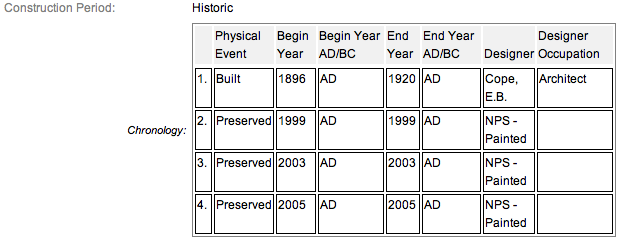
Many barns, farmsteads and associated outbuildings played important rolls during the Battle of Gettysburg both for the Union soldiers and for the Confederates as well. This farmstead has remained mostly unchanged except for the main house which has undergone some serious outside structural change.
There is an ID tablet in front of the white picket fence,marking the house. The fifteen acre Klingle Farm is south of town on the east side of Emmitsburg Road. It was in the center of the Confederate attacks on July 2nd and 3rd. Barn was built in 1870 and hence post-dates the battle. The house was built in 1850.
The Union soldiers taking shelter in the log structure knocked the chinking from between some of the logs. This allowed their weapons to stick through the walls and they discharged them while still being sheltered. Eventually, David Klingel filed a claim with the government for all the damage
and losses he incurred as a result of the battle-everything from losses of hay, corn, oats and crops, to fences and orchards destroyed, food stores taken, bedding and linens, pots and pans and clothing carried off-including a silk shawl, seven dresses, and one black cloth cape.
After the battle, the homeowner, Daniel Klingel, returned home on the 4th after a long trip where he was conducted from picket to picket through the area where the Army of the Potomac still faced Confederate troops. He returned to a scene of devastation, with nearly all his possesions gone or destroyed, including his shoemaking tools and leathers, his two cows and a calf. (He found part of one cow on the Trostle farm; the other cow and calf, miraculously alive, turned up a month later about two miles away.) There were bullet holes in the house, and powder marks where soldiers had fired from inside the house. Most of his crops were destroyed and all his fences missing. After the war Daniel filed an $880 claim for damages to his farm, but after long deliberation it was denied in 1881.
The farm was also covered by the dead. Bodies lay all around the house. Two were just inside the gate, and two others under the porch where they must have crawled for shelter before dying of their wounds. One shattered tree in Klingle's orchard concealed four dead soldiers huddled around a cooking pan with food still in it.
The barn is representative of a small 19th-Century Pennsylvania farm structure. Although the building post-dates 1863 Battle, still falls within period of significance for park. This post-1863 building serves as a placeholder for the building that was standing at the time of the battle. The outbuildings on the Klingel Farm supplement the only pre-Civil War structure (farmhouse) that survived from the battle era. This farmstead one of smaller complexes on battlefield. The collective massing of outbuildings and yards affected the battle as features useful for cover and concealment and as obstacles to organized movement. The house is the only battle-era structure on farm and contributes to the historic scene of Klingel Farm which was occupied by both Union & Confederate forces during the Battle of Gettysburg. The house is typical of an early 19th-Century farm dwelling of the area. The house was restored by the national park service.
Today the Klingle farmhouse still stands, although greatly changed in appearance from 1863. An addition on the rear (east) side of the house dates to after the war, as does its weatherboarding. The addition was gone when I visited. The original log structure of the house was recently revealed when a corner of the weatherboarding was removed. When I visited, all the original outer boarding had been stripped, revealing all of the original logs and the structure had been painted completely white. Also, the front porch had been removed. At the time of the Battle of Gettysburg, this house was a log structure.
The Daniel F Klingel Farm House is a contributing feature to the Gettysburg National Military Park Historic District which is nationally significant under NR Criteria A, B, C & D. Areas of Significance: Military, Politics/Government, Landscape Architecture, Conservation, Archeology-Historic. Period of Significance: 1863-1938. The original National Register Nomination was approved by the Keeper March 19, 1975. An update to this nomination was approved by the Keeper on January 23, 2004. This roadside marker is listed as contributing structure number 060.
From the NRHP narrative page for this tablet:
Only pre-Cs structure on Farm. Contributes to historic scene of Klingel Farm which was occupied by both Union & Confederate forces during Battle of Gettysburg. Hs is typical of early 19th-C farm dwelling of the area.
Short Physical Description:
Original log 2-story w/ attic, 26'4"x21', 24'4" high. Frame, cross-gable section, 15'10"x25', 24'4" high. Lean-to add, 17'x10', 15'7" high. Vertical board & batten. Porches w/ pent roofs on N, E & W elevs. Exterior bake oven on E.

My Sources
1.
Draw the Sword
2.
Stone Sentinels
3.
NRHP Narrative
4.
Gettysburg Daily